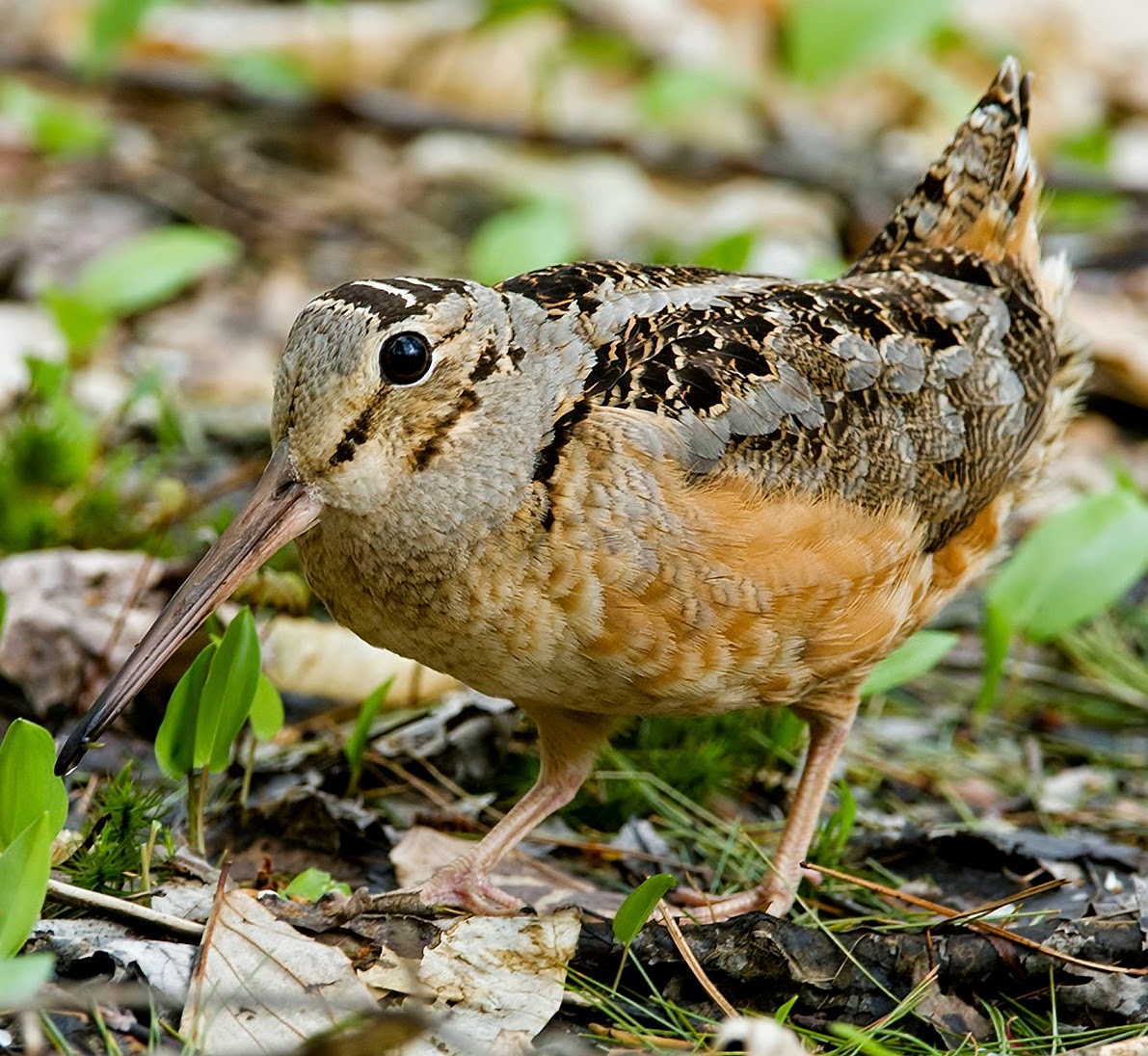 |
| Photo by Tim Flanigan (Northeast Regional Conservation Needs) |
Common name:
American woodcock (en); galinhola-pequena (pt); bécasse d’Amérique (fr); agachadiza americana (es); Kanadaschnepfe (de)
Taxonomy:
Order Charadriiformes
Family Scolopacidae
Range:
This species breeds in the eastern United States and south-eastern Canada, from southern Manitoba and North Dakota to southern Newfoundland and south to northern Florida and north-eastern Texas. The more northern population migrate south to winter in the south-eastern United States along the Gulf coast.
Size:
These birds are 25-31 cm long and have a wingspan of 40-51 cm. Females tend to be larger, weighing 150-280 g while males weigh 115-220 g.
Habitat:
American woodcocks are mostly found in open deciduous forests, also using scrublands, mixed and coniferous forests, and abandoned agricultural fields.
Diet:
They forage on the ground by probing the soil with their long bills, mainly taking earthworms but also other invertebrates such as snails, millipedes, centipedes, spiders, flies, beetles, and ants.
Breeding:
The American woodcock is polygynous with males attracting multiple partners and having no further part in the breeding process after mating. They breed in March-May. The female makes a shallow depression on the ground or sometimes lays the eggs on bare ground. Each female lays 1-5 greyish-orange eggs which she incubates alone for 20-22 days. The chicks leave the nest within hour of hatching and are able to feed themselves after 3-4 days, but relay on their mother for brooding and protection and become independent 31-38 days after hatching. Each female raises a single clutch per year.
Conservation:
IUCN status – LC (Least Concern)
This species has a very large breeding range and the global population is estimated at 5 million individuals. the population has undergone a small decline over the last 4 decades, but is not threatened at present.







